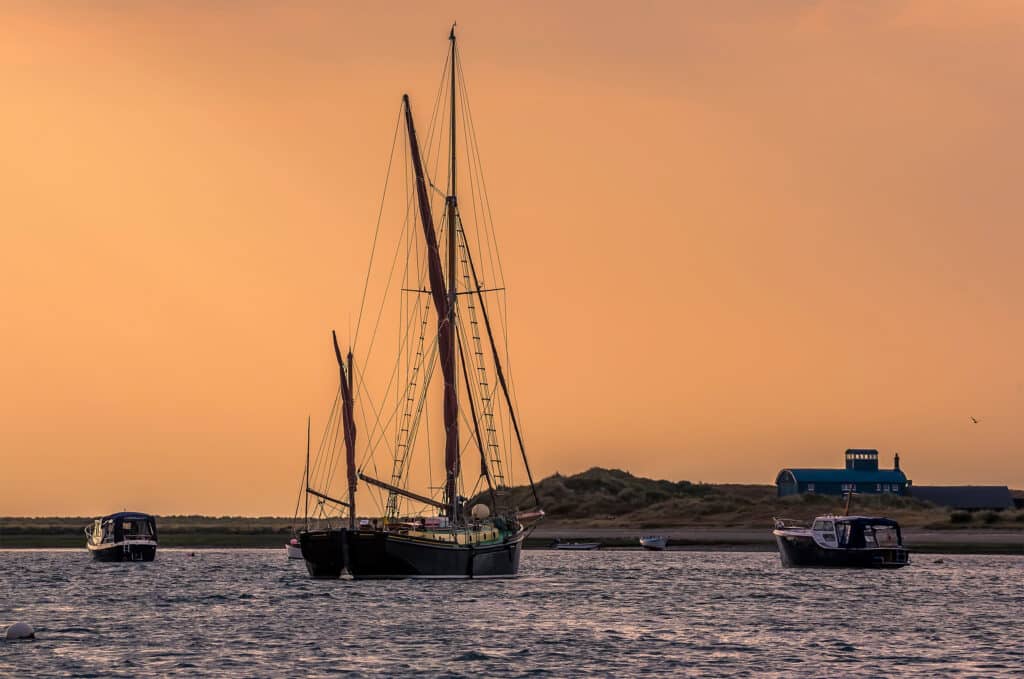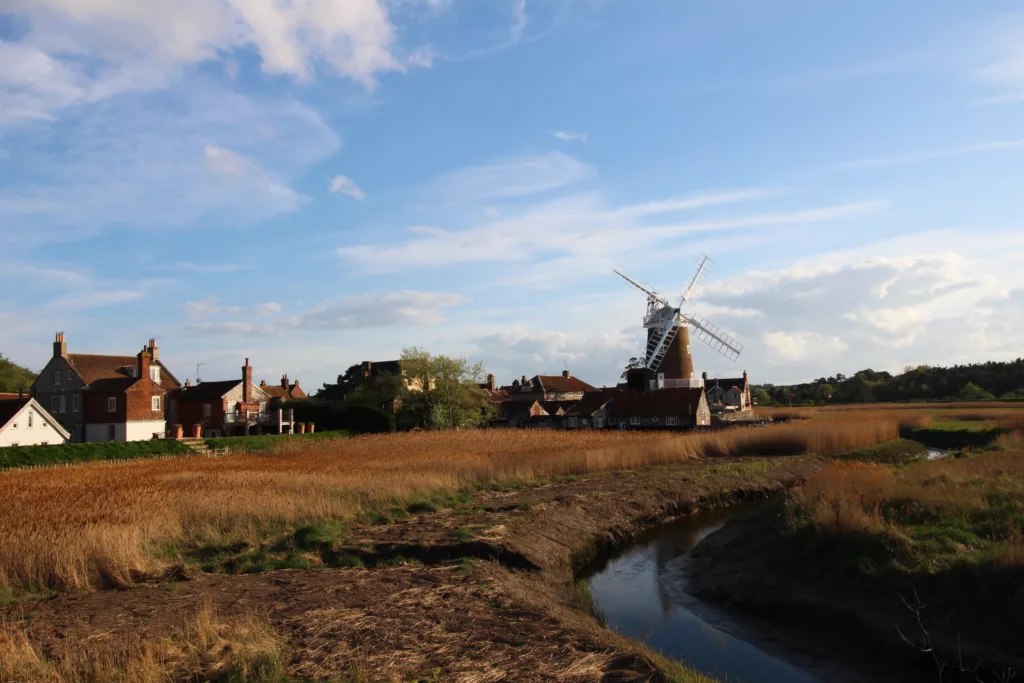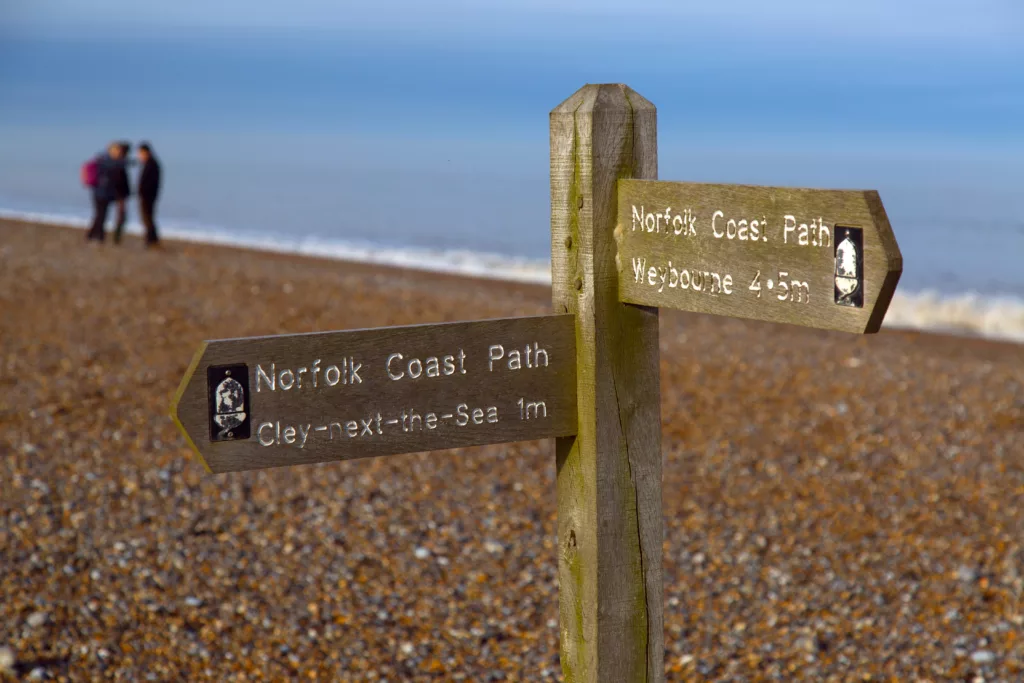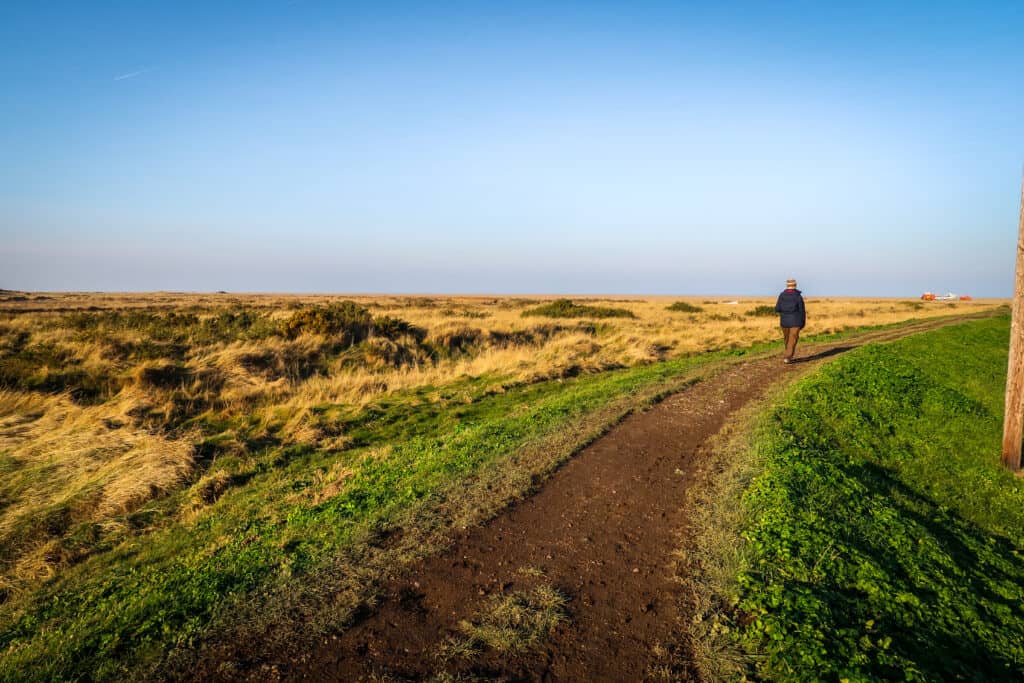
Norfolk’s Little Ports
Norfolk is awash with picturesque coastal towns and villages, but the wayward salt marsh has transformed the landscape over the centuries, and with it the livelihoods of places like Cley, Blakeney, Wiveton, and the Burnhams. Hard to imagine as you wander along the seawall listening to the wild gulls call, but these were once important trading ports. Former Stiffkey resident, Tarka the Otter author Henry Williamson wrote:
‘Once the coast here was lower, and the sea came up the channels with every tide, bearing wooden ships burthened with cargoes which were unloaded on the quays and taken in inland wagons. Many sailed away with grain, to other ports in England, who wanted the North Norfolk barley for beer. Gold was the medium by which payments were made, but not the paramount purpose of the exchange. The general principle was that exchange of goods in the community. Northumbria wanted barley to make beer to feed the coal miners, and East Anglia wanted coal. So barques with coal left Newcastle and drew into Cley and Blakeney and Overy and Burnham and returned with barley and wheat. The farmer sent his loaded wagon, painted with bright colours, drawn by four horses, from his black barn door to the quayside granary of his merchant, trusting him to pay the right price for the grain, and often as not the wagon came back with a load of coal and other goods.’
Henry Williamson,’Green Fields and Pavements’ by permission of The Henry Williamson Literary Estate ©

The Village of Reed and Marsh
Cley-next-the-Sea is a place of two worlds, a village on the edge, where the land becomes a sea of dancing reeds. Very much part of this landscape, it’s built from cobbles, sourced from the earth on which it stands, shaped by local crafts and long tradition. Cley is a beacon for artists, nature lovers and photographers with some of the best coastal walks in the UK. And it’s a hotspot for migratory birds from across the globe.
Scenic walkways wind among towering pale gold reeds, ripened by summer sun. Russet seed heads nod in unison, fantastically photogenic against a bright blue winter sky. This is when the reed cutters come to harvest. Reed-cutting is an ancient rural industry, still supporting local livelihoods and sustainable stewardship of the land, cared for here by the Norfolk Wildlife Trust. Cley windmill rises majestically from the panoramic coast path. Five storeys tall, built in the 19th century, the mill is a symbol of change and resilience. A working mill until 1921, it’s now one of the most unique places to stay in Norfolk, with stunning views across the reedbeds from the coast road to the banks of the River Glaven and beyond to the seawalls and marshes.
East of the village is Cley Marshes, a wildlife reserve and Area of Outstanding Natural Beauty, with its distinctive visitor centre (NR25 7SA), half camouflaged on the ridge above the coastal plateau. A great place for tea and cake with a view!

Northerly Wind at Cley Beach
Charge up your Vitamin D, boost your immune function and re-charge your serotonin levels; learn to love the outdoors in winter! Head to Cley-next-the-Sea, where Norfolk’s big skies are at their most spectacular. Arctic winds race across the North Sea unhindered until they slam into Norfolk, the first land mass to break their howling path from the far north. Yes, it’s cold. But it’s also awe inspiring.
Storm chasers will see a stunning elemental clash of land and sea. Stride into the wind towards the shingle ridge at Cley Beach. Pebbles, rounded and polished under your boots skitter back as you cross the divide between shelter and storm. Breaking the ridge, a wild world opens out in front of you; a maelstrom of iron grey sea, waves slashed with white foam, crashing onto the shore. Breakers push and shove the clattering stones, relentlessly moving them along the coast. Embrace the majesty of nature in winter, layer up well and hunker down with a thermos of something hot, protection against the biting cold. You’ll meet a few other hardy souls out in the exhilarating wind. Photographers and birdwatchers, looking for gannets, piratical skuas riding the tempest from the far north and rare sightings of puffins, blown off course by driving winds. This season is a time for movement, change and survival. When the wind’s pierced every layer of clothing, time to warm up in Cley village. Leave the beach to its storms, take the memories with you.

Salthouse Heath
There’s something about a winter afternoon in Salthouse that tugs the heart. Perhaps its the pale coastal light pouring through church windows, or smell of woodsmoke from cottages near the Heath. Maybe it’s the Heath itself, its wildness and sense of ancient lives whose stories are held by the earth, just beyond our sight.
Salthouse Heath was formed by melting glaciers thousands of years ago and is part of the geological Cromer Ridge. The rich mosaic of dry acid heath and grassland, fragrant gorse and broad-leaved woodland also guards a wealth of archaeological treasures. There are 11 scheduled monuments and a Bronze Age cemetery. And the remains of a World War II radar station to the north of the heath.
Heathland once defined much of Norfolk, yet is now a rare habitat. The 99-hectares of dry coastal heathland at Salthouse is one of the last remaining examples. Stand on this escarpment and drink in the stunning panorama of marsh, water, land and sea. It’s one of the most splendid views in Norfolk. From Cley Marsh Visitor Centre head towards the East Bank. Cross the coast road, follow the path through Walsey Hills, up past Great Hulver Hill and continue to Bridgefoot Lane. Turn left until you meet the path across onto Bard Hill, then head across the heath east towards Bloomstile Lane and just follow the road as it saunters down to Salthouse village where The Dun Cow pub will have the fire lit and a welcome waiting.
Build your own itinerary
If you fancy creating your own itinerary for a day trip to Norfolk or a longer visit, it couldn’t be simpler. Just go to Search Activities and select from our wide range of free and paid-for experiences, saving any that capture your imagination with the click of a button.
Once you’ve finished, you’ll find all the information stored in My Favourite, where you can drag and drop activities to create your own day-by-day itinerary! You can download this to a calendar and even share it with friends.
